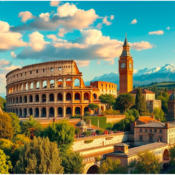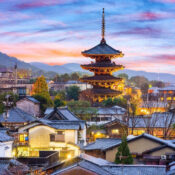12 Best Amazing Day Trips To Travel from Madrid
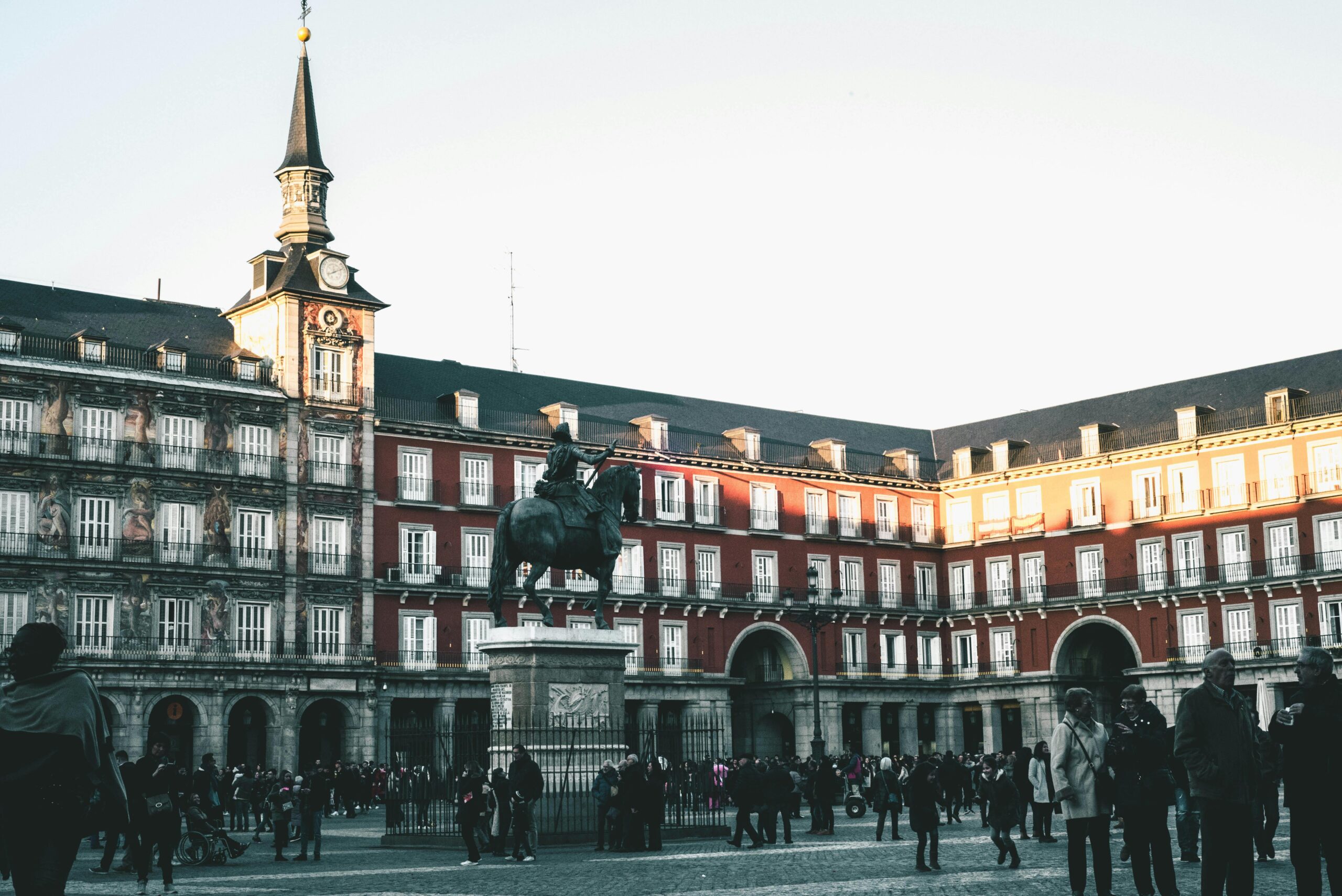
12 Best Amazing Day Trips To Travel from Madrid
For travelers looking for a change of pace and environment, day trips outside of Madrid provide a much-needed respite. After taking in the bustling streets and seemingly never-ending galleries of Madrid’s art museums, visitors will relish taking in the clean country air and touring smaller, more tranquil cities.
Travelers can escape to the serene mountains, quaint medieval towns, and imposing royal palaces of the Castile region in less than an hour’s drive. Three UNESCO-listed locations are close by: the university town of Alcalá de Henares; the exquisite old town of Aranjuez; and the 16th-century monastery-palace El Escorial.
Two great spots to visit are Manzanares el Real, which is well-known for its castle, and Colmenar Viejo, which is well-known for bullfighting, if you want to admire classic Castilian architecture and experience the local customs.
The stunning Sierra de Guadarrama is home to several locations, including the Puerto de Navacerrada ski resort. Read the blog, to know the best 12 amazing places to gtravel from Madrid.
Places To Travel from Madrid:
Below is the list of the places travel from Madrid:
1. El Escorial Monastery & Place, Madrid:
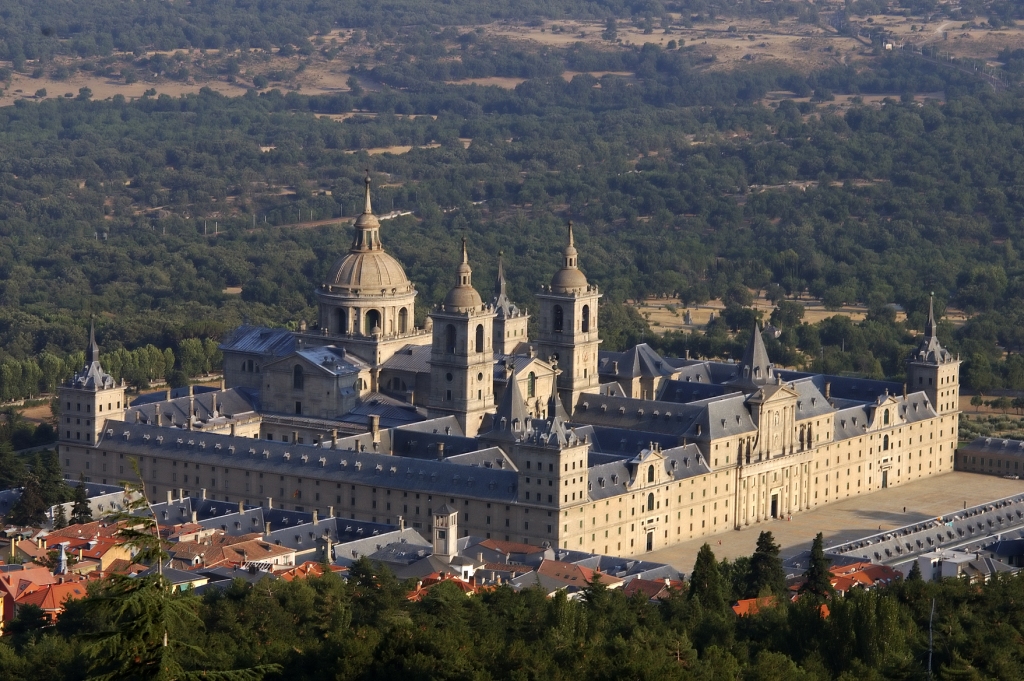
Situated approximately 50 kilometers outside of the Madrid metropolitan region on the southern slopes of the Sierra de Guadarrama, this lovely refuge pleasantly surprises visitors. The Royal Monastery and Palace of El Escorial, which is recognized by UNESCO, is tucked away in the small hamlet of San Lorenzo del Escorial (El Escorial). One of the most popular tourist destinations in Spain is the vast complex of monasteries and palaces, home to priceless artwork.
The 16th-century monastery constructed for Felipe II, who dedicated the Saint Lawrence monument following the Spanish army’s victory over the French at the Battle of Saint-Quentin on August 10, 1557. A center of political authority during the Spanish Empire was El Escorial.
El Escorial looks less like a monastery and more like a fortification from the outside. Juan de Herrera created the grayish granite complex; the Herrerian architectural style blends Spanish Baroque features with Italian classicism from the 16th century.
The opulent building features 1,600 paintings, 86 stairs, 88 fountains, more than 2,000 windows, more than 1,000 doors, and 15 courtyards overall. The magnificent 90-meter-tall dome of the twin-towered church is at its center.
The El Escorial Monastery and the Valley of the Fallen trip is a convenient method to see the surrounding monuments of Valle de los Caídos and explore the palaces and monastery. This five-hour day excursion from Madrid includes air-conditioned coach transportation, entrance fees, and a local guide who will highlight the highlights and provide historical context. This can be combined with a half-day sightseeing trip of Madrid.
2. Toledo,Madrid:
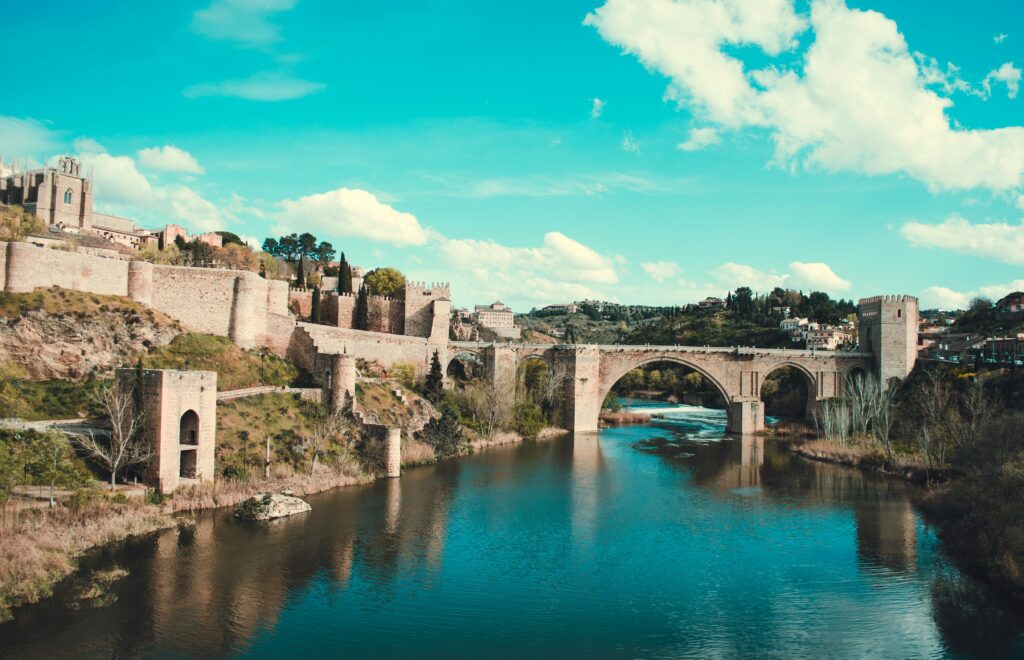
The enchanting atmosphere of the ancient hilltop city of Toledo is captured in the famous landscape painting “Vista de Toledo,” painted between 1598 and 1599 by El Greco, a Spanish Renaissance artist who lived and worked here in the middle of the 16th century.
The gloomy hues and undulating clouds in the artwork demonstrate the impact of mysticism, which was a popular spiritual viewpoint at the period. El Greco depicts the gloomy, ominous atmosphere of a historically significant city using his imagination.
During the Middle Ages, Toledo was home to three coexisting and prosperous cultures: Islamic, Jewish, and Christian. Today, Toledo’s most popular tourist destinations honor the creative and cultural legacies of these three communities.
Toledo’s medieval walls, churches, convents, synagogues, mosques, and winding, stone-paved alleyways take tourists back several centuries in time. The entire city has been named a UNESCO World Heritage.
Historic city enthusiasts might choose to spend the night in Toledo so they can more slowly peruse the city’s plethora of cultural attractions. The four-star Parador de Toledo, which is sure to satisfy even the pickiest tourists, features contemporary guest rooms with tile flooring, wood-beamed ceilings, and balconies in addition to expansive views of Toledo’s skyline. A classic restaurant serving food from the Castile-La Mancha region is one of the amenities, along with an outdoor pool.
3. Royal Palace of Aranjuez:
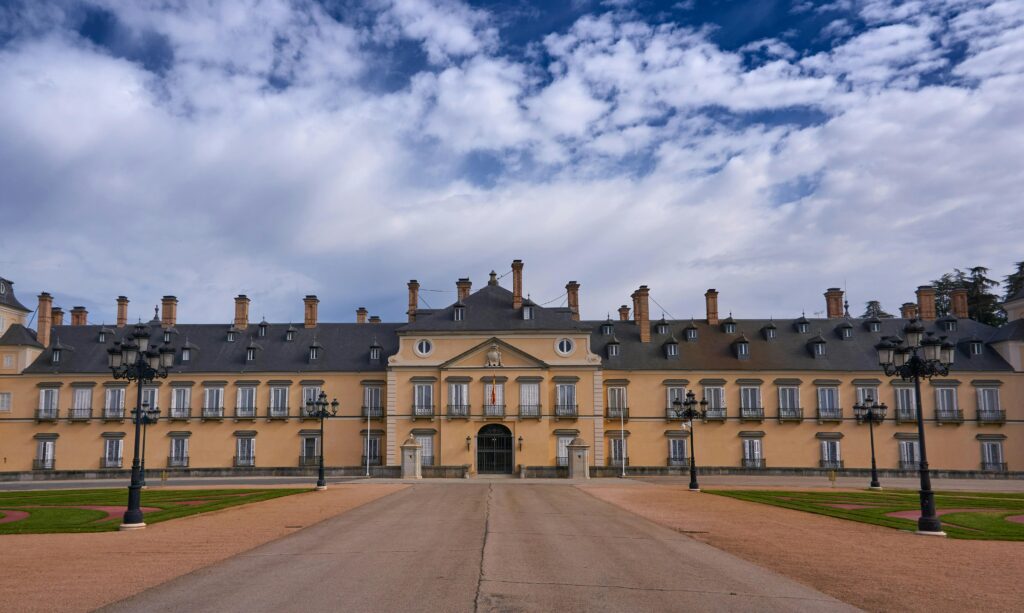
Aranjuez, a city recognized by UNESCO, has an impressive cultural history. The location of the royal summer house decided upon in the sixteenth century, and during the eighteenth and nineteenth centuries, during the reigns of Philip V, Ferdinand VI, Charles III, and Charles IV, improvements made to the Royal Palace.
The well-preserved historic town center is from the eighteenth century. Enlightenment concepts of order are embodied in the Baroque gardens, tree-lined squares, shaded woods, and mathematically constructed roads.
The Royal Palace, which surrounded by more than 100 hectares of luxuriant gardens, constructed for Philip II in 1560 and reconstructed in the 1660s. The façade, which composed of brick and stone in two tones, is a prime example of the refined Neoclassical style that the House of Habsburg—a branch of the Spanish royal family—favored. The exquisitely furnished interior filled with priceless tapestries, gorgeous ceramics, outstanding paintings, and exquisite objets d’art.
Aranjuez conveniently located 47 kilometers south of Madrid and reached by car or train. Taking the Strawberry Train (Tren de la Fresa) is the most iconic method to get there. Tastes of local strawberries served by hostesses dressed in period costume on this reconstructed 19th-century train.
The Strawberry Train departs on weekends in the spring, summer, and fall (through October) from the Railway Museum in Madrid. The picturesque path passes through lush farmlands and heavily forested areas.
4. Segovia:
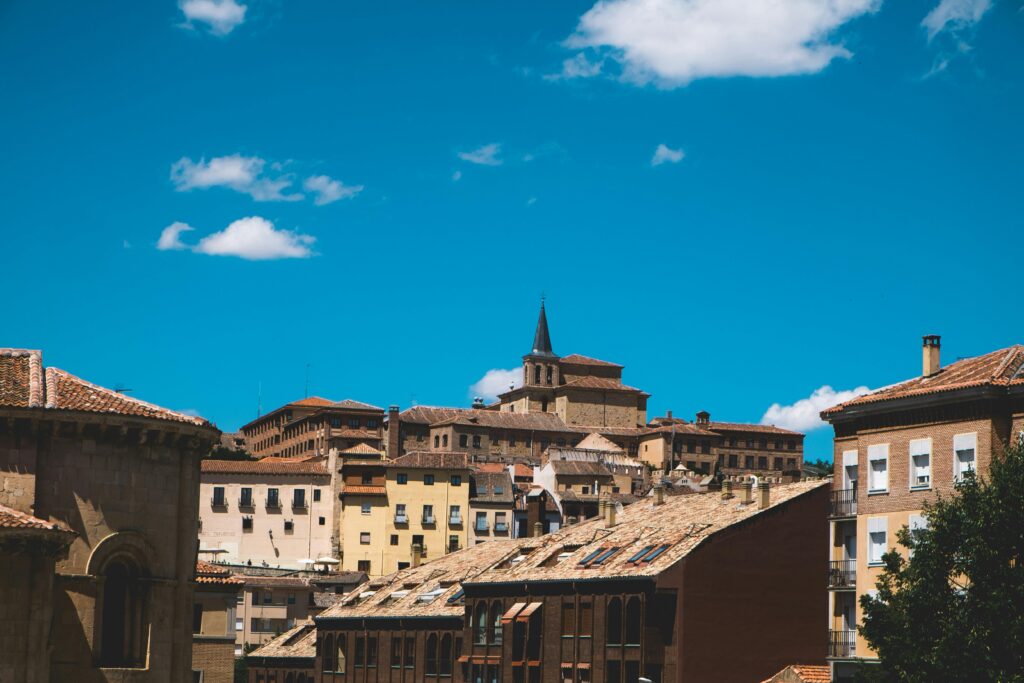
Like Toledo, Segovia perched on a hill and offers expansive views from its Alcazar over the surrounding Castilian countryside.
One of the two greatest surviving Roman constructions in Spain, the Ancient Aqueduct, constructed in 50 CE and considered a unique gem among Segovia’s top attractions. Not only are 167 of its original arches still present, but they’re still whole.
In the charming, meandering lanes of Segovia’s Old Town, one can continue to uncover history in the Judería, which has Romanesque churches, enclosing defensive walls, metal industries, and synagogues that were converted to Christian churches following the Reconquista.
With the Avila and Segovia Sightseeing Tour, traveling to Segovia from Madrid is a stress-free experience. . A local guide offers insights into the history and customs of the area. In Segovia, there’s the opportunity of enjoying a classic gourmet lunch.
5. Siguenza:
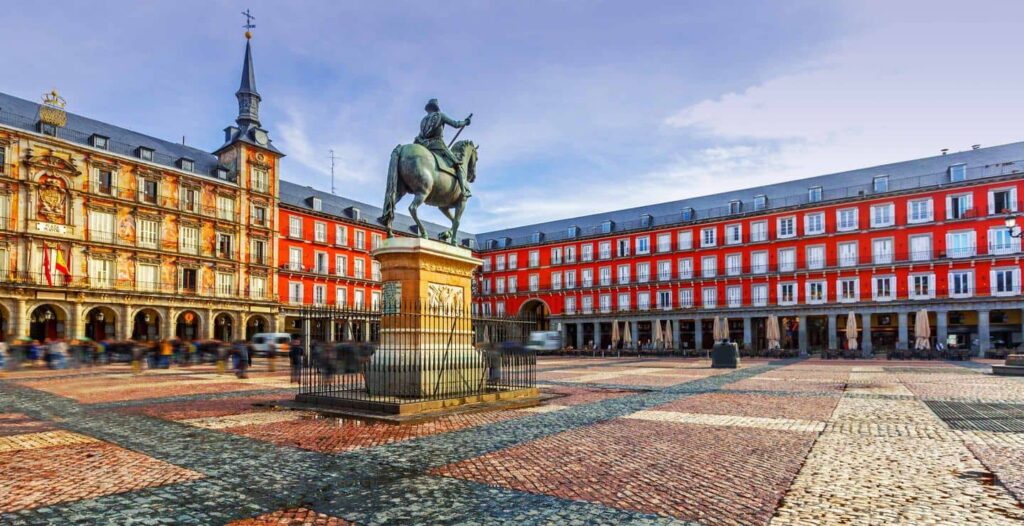
Sigüenza, an old city in the Guadalajara region (131 kilometers from Madrid), recognized as a Historic-Artistic Site due to its exceptional cultural legacy. Bishop Bernardo de Agen, a Frenchman, retook the town in 1124 after it held by the Moors and the ancient Romans in the eighth century.
The majestic Castillo de Sigüenza, a fortress dating back to the 12th century with enormous crenelated defenses, dominates the town. Restored to its original character, the Parador de Sigüenza is a four-star hotel situated within this remarkable National Monument. The courtyard’s cobblestones and stone walls are examples of the original architecture. The classic Castilian décor in the guest rooms gives the impression that you are staying in a palace.
The cuisine of Castile and La Mancha is served at the Parador de Sigüenza Restaurant, which has a formal dining area with views of the woodland. The menu features classic regional dishes like bizcocho borracho (cake soaked in flavorful syrup) and migas (bread and meat stew seasoned with paprika). Additionally, the restaurant hosts Zarzuela performances and Opera Nights.
The Molino de Alcuneza, located outside of Sigüenza in the countryside, is a worthwhile overnight stay for people who like Relais & Châteaux lodgings (approximately a 10-minute drive). Renovated from a 15th-century flour mill, this little boutique hotel is located in a serene, rural environment. Intimate Jacuzzi, outdoor pool, and gorgeous gardens next to a bubbling stream enhance the luxurious experience.
The Michelin-starred restaurant at the Molino de Alcuneza features a renowned chef who creates inventive seasonal dishes using ingredients that acquired locally. The restaurant, which proud to be a part of the growing European artisanal bread movement. It offers seven different varieties of handcrafted organic bread that created with traditional flours milled from heirloom whole grains. For this purpose, the hotel uses its 500-year-old mill that refurbished, and the grains cultivated by a local farmer.
Sigüenza’s picturesque old streets lead to an abundance of historically significant structures. The Plaza Mayor, a Renaissance-style market square dotted with Casas de los Canónigos (beautiful homes with ornate balconies), is a must-see sight.
6. Alcala de Henares,Madrid:
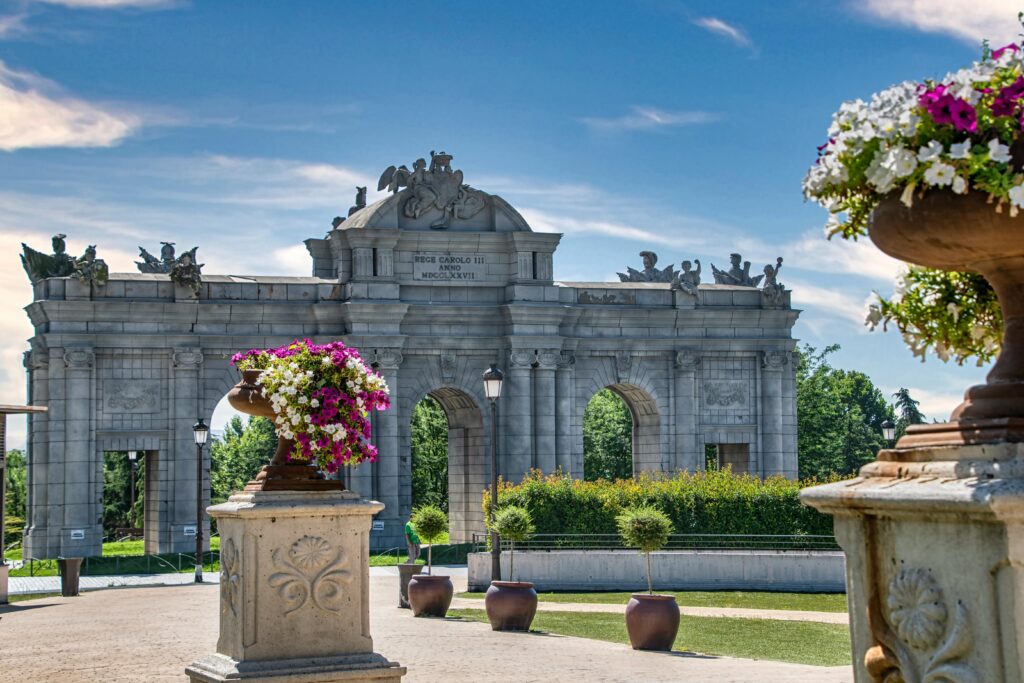
The UNESCO-listed town of Alcalá de Henares, some 35 kilometers from the capital of Madrid, has a distinguished history as the birthplace of Emperor Ferdinand I and Don Quixote author Cervantes.
The town is also home to the renowned Universidad de Alcalá de Henares, which established in 1498 by Cardinal Jiménez de Cisneros. With its 1543 Plateresque façade, the Colegio de San Ildefonso (Plaza de San Diego), the most impressive university structure, is a prime example of Spanish Renaissance architecture.
The 16th-century Magisterial-Cathedral, one of only two Magisterial churches worldwide (the other being Saint Peter’s in Louvain, Belgium), is a sight not to be missed. On the spot where young saints Justo and Pastor crucified, this flamboyant Gothic monument erected.
Visit the Visitor Center (Plaza de Cervantes), located on the site of Santa María la Mayor parish church, for basic tourist information. The place is noteworthy even if the chapel destroyed because it was here that Miguel de Cervantes baptized on October 9, 1547. A replica of Cervantes’ baptismal certificate is on exhibit at the visitor center.
The Calle Mayor is the town’s principal thoroughfare and the hub of social activity. There are arcades brimming with eateries, cafés, pastry stores, and small boutiques along this busy pedestrian strip.
The Parador de Alcalá de Henares is beside the Cervantes Museum and reached by tram. The old college of a 17th-century monastery now houses this opulent four-star hotel, which refurbished with an upmarket spa and rebuilt in a modern, minimalist style.
7. Medieval Fortress of Manzanares:
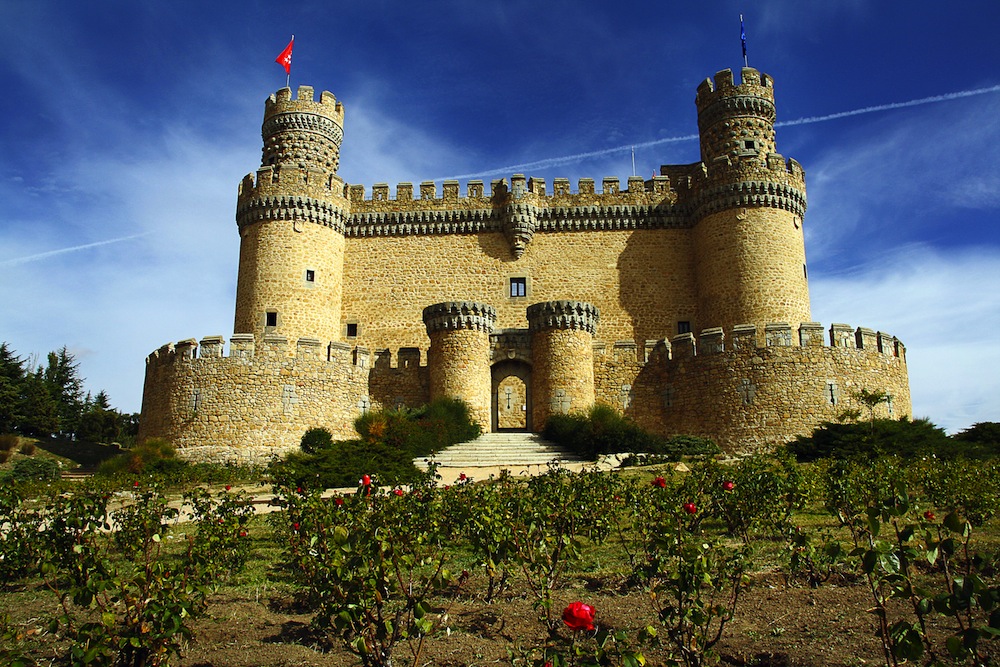
Nestled in a lovely valley of the Sierra de Guadarrama, a magnificent mountain range that is protected as a national park, is the medieval community of Manzanares El Real. Manzanares El Real is only 50 kilometers away from Madrid, making it a simple day trip destination.
One of the best locations in Spain to see a medieval stronghold is Manzanares El Real. With its massive cylindrical towers and crenelated defenses, the well-preserved Castillo de Manzanares El Real exudes a fearsome appearance. The monument represents military architecture from Castile in the fifteenth century. To repel attackers, arrow slits incorporated into the architecture of massive ramparts.
The charming valley of the Sierra de Guadarrama, a gorgeous mountain range, is home to the medieval community of Manzanares El Real. Other notable sites in Manzanares El Real include the Iglesia de Santa María de la Nava, a 13th-century Romanesque church; the 15th-century Iglesia de Nuestra Señora de las Nieves, a church with a Romanesque-style nave; and the Ethnological and Archaeological Museum in the Casa de la Cultura (Calle Cañada), which has an extensive collection of local artifacts.
The Ermita de Nuestra Señora de la Peña Sacra is a 15th-century hermitage with stunning views of the La Pedriza del Manzanares mountains, perched on a mountaintop one kilometer outside the hamlet. Hiking pathways lead from the settlement to Peña Sacra Hermitage or Santillana Reservoir, two places where nature enthusiasts should venture to discover the stunning surroundings.
8. Colmenar Viejo,Madrid:
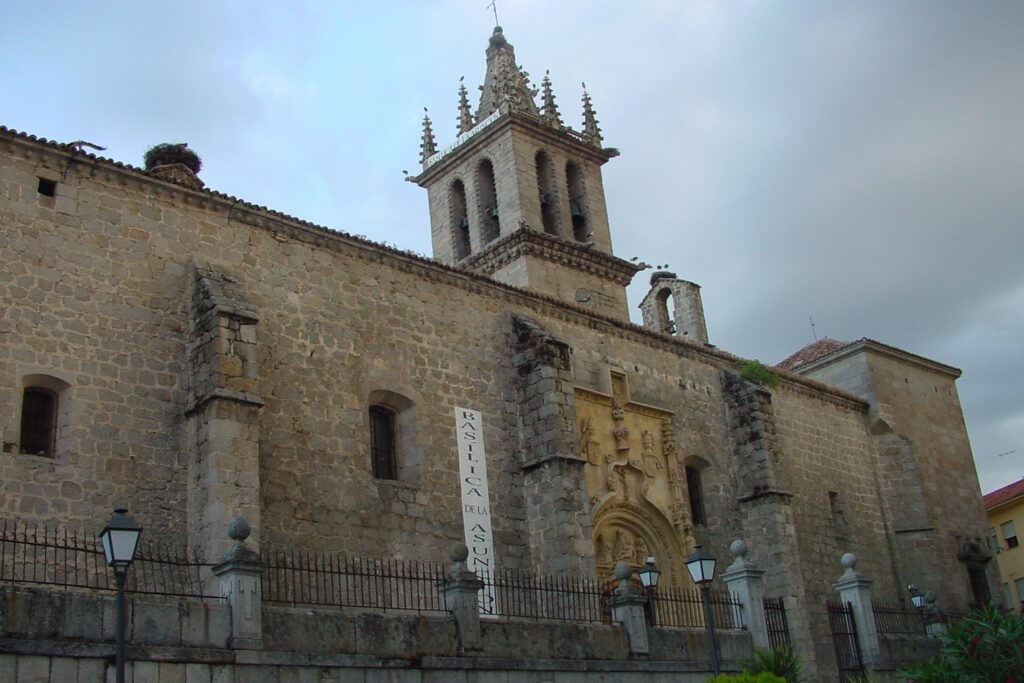
Cattle ranches encircle the village of Colmenar Viejo, which is about 35 kilometers from Madrid in the rural Sierra de Guadarrama region.
There are two intriguing cultural sites in Colmenar Viejo. The Casa-Museo de la Villa houses a wide range of museum collections pertaining to archaeology, history, and ethnography within a typical 17th-century home. During the temporary period, the Centro Cultural Pablo Ruiz Picasso presents captivating modern art exhibitions.
Constructed during the 15th and 16th centuries, the Basílica de la Asunción de Nuestra Señora is the prime example of the town’s artistic and religious legacy. A carved masonry spire in the Castilian style elegantly embellishes the 50-meter-tall tower, while the beautifully ornamented façade showcases complex sculptural embellishments.
Inside, the large sanctuary with a lofty vaulted ceiling and the gilded Plateresque high altar leaves visitors in awe. There is a museum of sacred art inside the basilica.
The town celebrates the cattle migration with a traditional folk festival called La Vaquilla. It takes place every year at the end of January or the beginning of February. Cows paraded through the town wearing jewels, ribbons, paper flowers, manila shawls, and rosettes.
9. Chinchon:
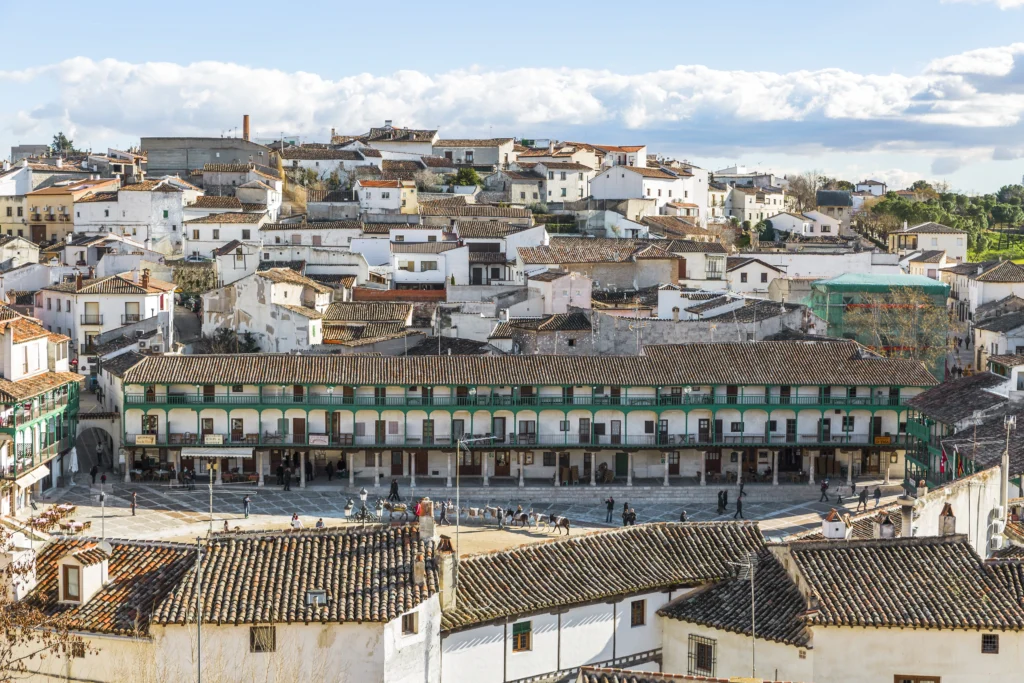
Nestled amidst olive orchards, Chinchón is a small Castilian village located around 20 kilometers northeast of Aranjuez. The Plaza Mayor, surrounded by elegant old homes with covered balconies, is the town’s focal point. There are a lot of tiny eateries, boutiques, and cafés in the Plaza Mayor.
Chinchón is well-known for its summertime cultural calendar, which features concerts and plays. Bullfights held in the town since the sixteenth century, and the custom is followed today.
Visit the Iglesia de Nuestra Señora de la Asunción for the greatest view of the entire town. Goya’s masterwork, the Assumption of the Virgin Mary, is on exhibit in this magnificent church.
10. Palacio Real del Pardo:
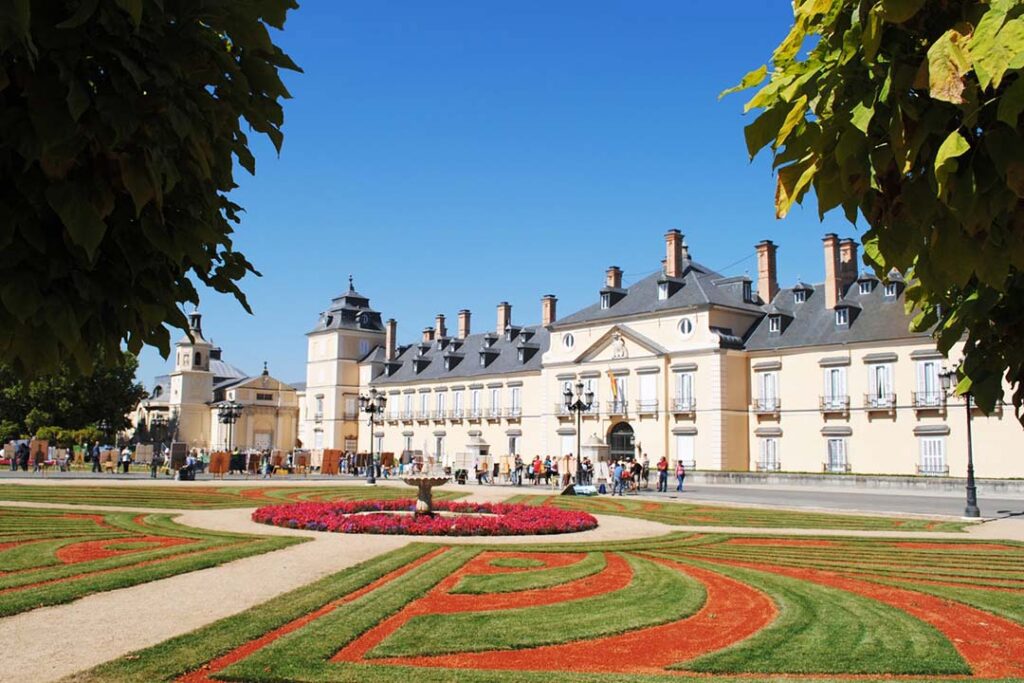
The Palacio Real del Pardo is a convenient day trip location. It situated just 15 kilometers away from the heart of Madrid. The El Pardo hills highly sought-after hunting grounds, therefore this grand palace constructed on the site of a royal hunting lodge. Charles V extensively reconstructed the palace in the sixteenth century, and Phillip III renovated it following a fire in 1604.
Tuesday through Sunday, tickets for entry are available for tourists to explore the palace’s interior. Adorned with priceless tapestries, exquisite frescoes, and notable artworks. The castle features work of art by Goya and Titian, among other masters.
Situated in lovely surroundings, the palace is a fantastic spot to explore and unwind. On two terraces, neoclassical gardens with decorative pools and cascading waterfalls set up. The attractiveness is enhanced by sculptures, ornate urns, and formal French-style landscaping. Springtime brings the blooms of many fruit trees, especially cherry trees.
Also Read: 12 Best beaches in Southern Spain
11. Puerto de Navacerrada Ski Resort:

The closest ski resort to Madrid is 60 kilometers distant, in Puerto de Navacerrada (and 72 kilometers from Segovia). At 1,858 meters above sea level, the Puerto de Navacerrada resort situated in the Sierra de Guadarrama mountains.
With two zones catering to varying skill levels, the huge landscape spanning over 10,000 kilometers separated into two sections. The bottom area features beginner to intermediate slopes, while the top area features intermediate to advanced slopes. These pistes, which wind amid pine forests, well-sheltered.
The resort offers a few dining options, a ski school, ski equipment rentals, and lodging options galore. Navacerrada is a charming village that is well worth visiting. Getting to the resort by vehicle or train is quite convenient.
12. Guadalajara,Madrid:
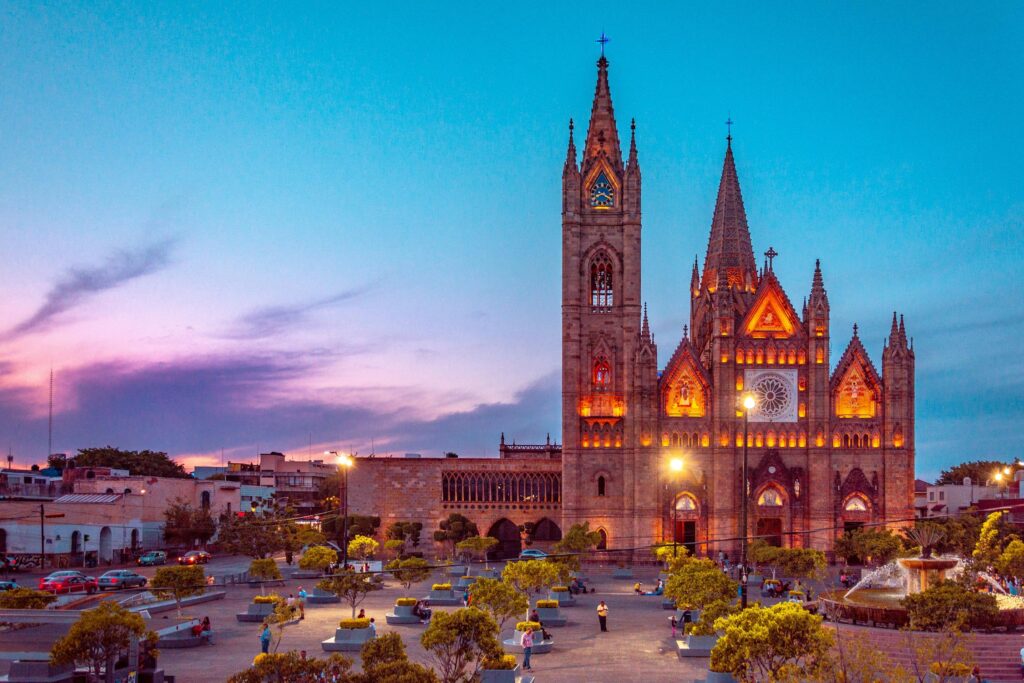
With a long and distinguished history connected to the Dukes of El Infantado. The town of Guadalajara stands proudly along the Henares River. The town’s magnificent monuments bear witness to an intriguing aristocratic past.
The most famous sight in Guadalajara is the Palacio de los Duques del Infantado, which visitors should not miss. The palace was constructed in the fifteenth century in the Gothic style with elements of the Spanish Islamic Mudéjar style. The palace was refurbished in a Renaissance style by the 5th Duke of El Infantado. Also had magnificent murals commissioned in various rooms and balconies added to the façade.
With its exhibits of fine arts, archeology, and anthropology on display, the Museum of Guadalajara. It occupies a portion of the Palacio del Infantado that is decorated with frescoes from the sixteenth century. Religious art makes up most of the fine arts collection.
Constructed in the 13th century on the site of an ancient Moorish Mosque. The Concatedral de Santa María de la Fuente is another must-see monument. The interior of the church was enriched with a magnificent 17th-century cupola, while its façade boasts Renaissance restorations. The Capilla de Luis de Lucena is another significant place of worship. This unique small church combines aspects of Mudéjar and Romanesque.
Visit our website Travel India Info, to know more the places to explore , or email us at info@travelindiainfo.com. We are happy to assist you. Happy Travelling!!
Recent Posts
Europe Travel Guide: Best Places to Visit & Explore
15 Best Amazing Places to Explore in Scotland
9 Best Amazing Day Trip To Explore from Kyoto


